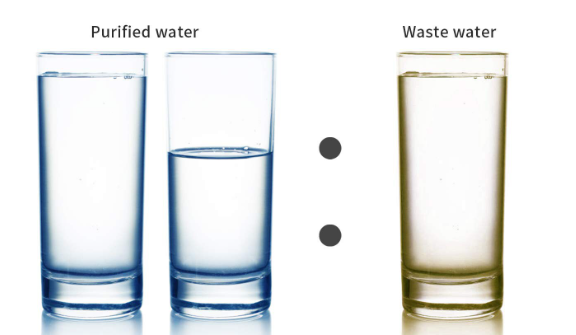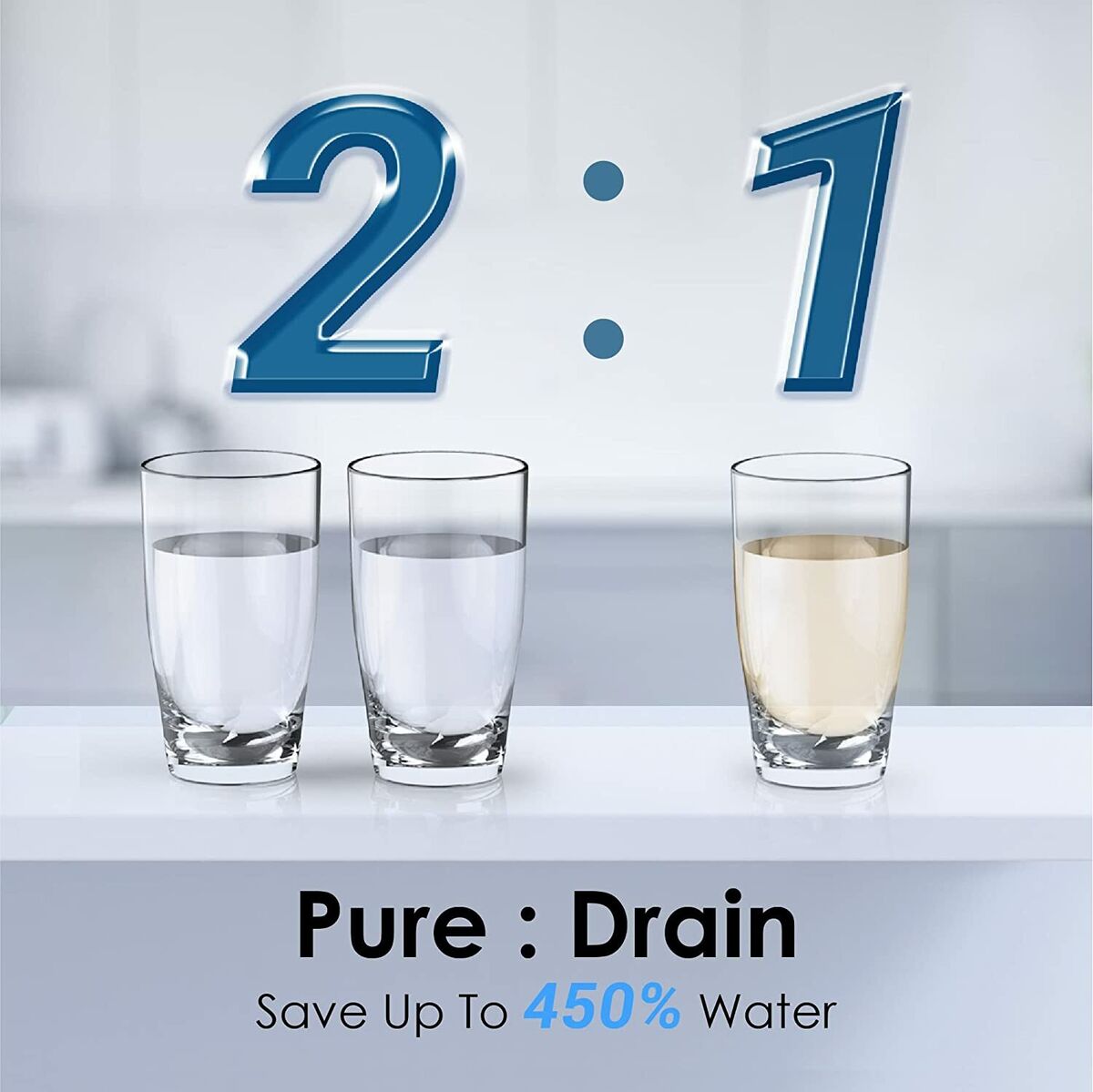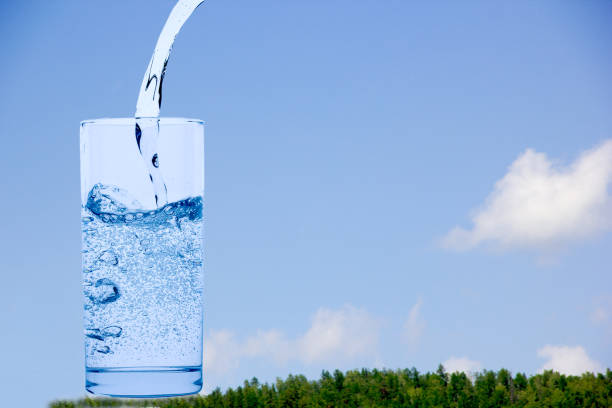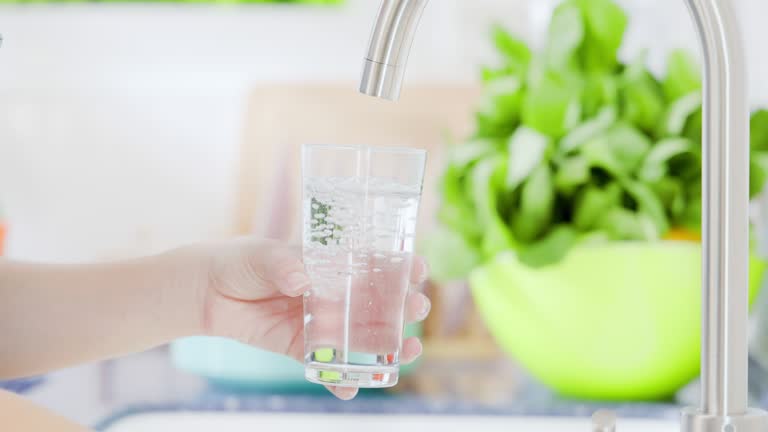Today, Susan wants to talk to you about an important concept about water purifiers - wastewater ratio. You may wonder, what is this? Moreover, does a larger wastewater ratio mean a better water purifier? Let's unveil this mystery together!

The wastewater ratio refers to the volume ratio of pure water produced by the water purifier to the wastewater discharged. Generally, water purification equipment using RO membrane or nanofiltration uses the wastewater ratio. It relies on reverse osmosis membrane to purify tap water. After the tap water is compressed and passes through the reverse osmosis membrane, it becomes pure water and wastewater. The ratio of pure water to wastewater is the wastewater ratio.

The wastewater ratio, as the name suggests, refers to the volume ratio of pure water produced by a pure water machine or other water purification equipment to the wastewater discharged per unit time. It is usually used to measure the working efficiency and water production rate of RO reverse osmosis water purifiers. For example, if the wastewater ratio is 1:1, it means that for every 1 part of pure water produced by the equipment, 1 part of wastewater will be discharged.

In the past, the wastewater ratio of many water purifiers may be 1:3, which means that 3 cups of wastewater will be produced for every cup of pure water produced. However, with the advancement of technology, the wastewater ratio of most water purifiers on the market has been significantly improved, and some have even reached the level of 1:1 or 2:1. The wastewater ratio is not only related to the water purification efficiency of the water purification equipment, but also directly related to the water production rate of the purified water. For example, if the wastewater ratio is 2:1, then the water production rate of the purified water is 66%, which means that the equipment effectively reduces the generation of wastewater during the water purification process.

The specific meanings of the wastewater ratio include:
1. Reflecting the water purification efficiency: The higher the ratio, the less wastewater is generated when the same amount of pure water is produced.
2. Measuring the utilization of water resources: It is directly related to the degree of water resource conservation.
3. Affecting the service life of the filter element: A high wastewater ratio may increase the burden on the filter element.
4. Involving water cost: The more wastewater, the higher the water cost may be.

When choosing an RO water purifier, the wastewater ratio is a very important reference indicator. By understanding the wastewater ratio, we can better evaluate the performance of the water purifier and choose a more environmentally friendly and efficient water purification equipment. At the same time, the wastewater ratio is also an important reference for evaluating the effect of wastewater treatment, the discharge of pollutants, formulating environmental protection policies and protecting health. Therefore, when choosing and using a water purifier, the wastewater ratio is a key factor that cannot be ignored.

How is the wastewater ratio calculated?
The wastewater ratio of a water purifier refers to the volume ratio of pure water to wastewater during a certain period of filtration. For example, if 300CC is displayed on the water purifier, it means that the wastewater ratio is 1:3, which means that for every portion of pure water produced by the water purifier, 3 portions of wastewater will be produced. The more common wastewater ratios of water purifiers are 1:2, 1:1, 1.5:1 and 2:1.
You can also calculate the wastewater ratio by the following method:
1. Find two containers, preferably with scales.
2. Turn on the faucet and collect water in two cups at the same time, one for pure water and one for waste water.
3. When the stored water reaches 300 ml, pick up the two cups at the same time.
4. Check the scale of the wastewater cup to get the wastewater ratio.
The choice of wastewater ratio depends on several factors:
1. Water quality: Areas with poor water quality may require a higher wastewater ratio to ensure the quality of purified water.
2. Water consumption: Places with high water consumption may prefer water purifiers with low wastewater ratios.
3. Cost: Including water bills, filter replacement costs, etc.
4. Environmental awareness: Users with higher environmental requirements may pay more attention to the wastewater ratio.

When selecting the wastewater ratio, the following factors need to be considered comprehensively:
1. Water purification effect: ensure that the quality of purified water meets the demand.
2. Cost factors: including equipment purchase, operation and maintenance costs.
3. Water resource utilization: minimize the generation of wastewater and improve the efficiency of water resource utilization.
4. Actual needs: choose according to the specific water consumption of the family or place.

In order to achieve water conservation and standardize the water purification industry, the national standard China Water Efficiency Standard is implemented, and the water production rate of the water purifier is marked. GB 34914-2021 "Water Purifier Water Efficiency Limit Value and Water Efficiency Grade" (hereinafter referred to as the new version of the water purifier water efficiency standard) was issued on December 1, 2021 and officially implemented on July 1, 2022. According to the requirements of the new version of the water purifier water efficiency grade index, a water purification rate of 45% is a third-level water efficiency, a water purification rate of 55% is a second-level water efficiency, and a water purification rate of 65% is a first-level water efficiency. And mark it in a prominent position on the water purifier. Consumers can buy the product that suits them according to the mark. Of course, the first level of water efficiency is more water-saving.

○ Producer name: refers to the product brand owner or authorized user who is legally responsible for the product quality.
○ Specification model: should be consistent with the mark on the product packaging. And it should be consistent with the specifications and models on the "Sanitary Permit for Hygienic and Safety Products of Water Dispensers" issued by the health department.
○ Water efficiency information code: automatically generated by the label filing information system when the producer or importer files it.
○ Water efficiency level: divided into three levels, level 1 has low water consumption and level 3 has high water consumption.
○ Water purification rate and rated total water purification volume: should correspond to the value range of the water efficiency level.
Knowing the mystery of the wastewater ratio, we can be more wise when choosing a water purifier! Don't forget to consider various factors comprehensively and find the water purifier that suits you best! .











 How to choose a filtered water purifier: help you buy the best water purifier! Keep your water as pure as it can be!
How to choose a filtered water purifier: help you buy the best water purifier! Keep your water as pure as it can be!
 Analysis and solutions to the causes of reverse osmosis membrane fouling
Analysis and solutions to the causes of reverse osmosis membrane fouling
 Do you know how to extend the life of your reverse osmosis membrane?
Do you know how to extend the life of your reverse osmosis membrane?
 How much do you know about ultrafiltration technology and ultrafiltration membranes?? Ultrafiltration Knowledge Points Collection, you deserve it!
How much do you know about ultrafiltration technology and ultrafiltration membranes?? Ultrafiltration Knowledge Points Collection, you deserve it!